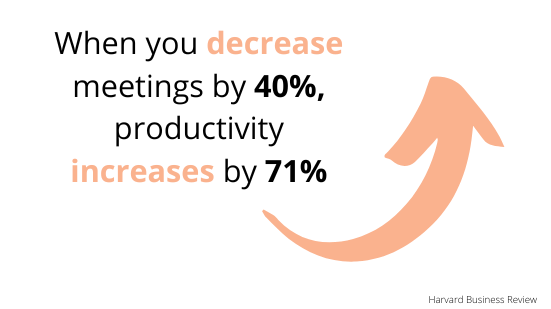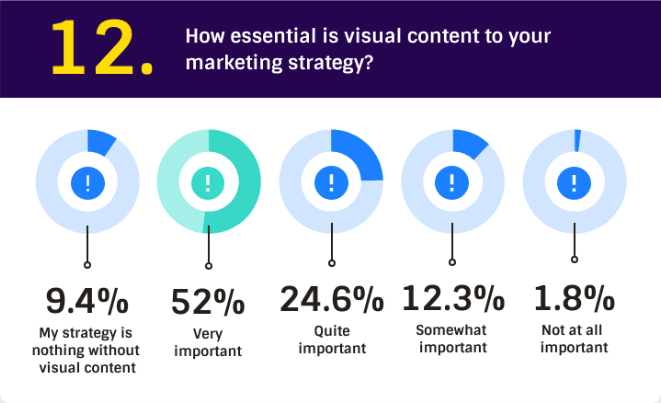Have you ever received an article that’s brilliantly written in terms of language and grammar, but completely misses the mark when it comes to your objectives or SEO?
As content marketing managers, we all know lengthy edits are a serious drain on productivity. To combat this, businesses in the know use briefs to empower writers to create high-quality content on the first try.
This article is going to show you how to boost your content marketing productivity with the help of a one to two-page content brief.
But first, what exactly is a content brief, and why are they so important?
What is a content brief?
A content brief is a digital document that dictates the scope and requirements of a proposed piece of content. It contains all the details needed to enable the writer to produce an article that meets specific objectives.
Content briefs should include everything from the word count, topic, and title, to image specifications, target keywords, internal links, and more.
Creating a clear content brief before your writer puts pen to paper is just as important as creating a clear content marketing strategy.
How Content Briefs Improve Productivity
Content briefs are vital to your content marketing strategy – that is, if you want to create consistently high-quality content on a regular basis.
Here’s how they increase productivity.
Speeds Up The Writing Process
A writer’s workflow is disrupted every time they have to contact you for clarification. The more times they have to clarify, the longer it will take them to finalize their draft. In a climate where more content = more revenue, maintaining content velocity is critical for success.
Content briefs eliminate the back-and-forth that occurs when writers don’t have all the information they need. Armed with an all-inclusive resource, they can guide themselves through the writing process and finish drafts autonomously.
Reduces Time Spent in Meetings
Sure, face-to-face meetings are important- but they can also be detrimental to productivity. According to research by Harvard Business Review, 92% of employees feel meetings are costly and unproductive. When they’re reduced by 40%, productivity increases by 71%.

Even though you may have searched online for “best small business phone system VoIP” to get the best VoIP phone system for conducting conference meetings, it’s still easy to miss important information. Content briefs eliminate this problem by including everything in a centralized, digital document.
Reduces Rewrites and Revisions
Lengthy editing significantly slows down production and puts a strain on your content quality assurance process. Content briefs combat this by supplying writers with the information needed to produce high-quality first drafts.
With access to a client-approved document that gives clear instructions, writers are unlikely to produce content that requires significant adjustments. By reducing the likelihood of large-scale rewrites and revisions, writers and editors spend less time improving weak content and more time creating quality output.
Improves Communication Productivity
The increased viability of remote working and global expansion has seen us invest heavily in communication solutions. Your business probably has an enterprise communication platform or small business VoIP solution – but does it have an internal knowledge base?
A content brief is a type of internal knowledge resource that all members of your team can access. By providing your teams with a single reference source, you immediately reduce silos and improve internal collaborations.
If you’re creating content for a client, content briefs can be used to direct client communications too. Your outline can be used as a guide when requesting information, for example.
Also, remember that even the smallest discrepancy could lead writers to create content that doesn’t align with a your objectives. If you’re working with freelance writers or agencies, ensure you and your writer are on the same page by sharing finalized content briefs with them before writing commences. You may even want to include as part of a statement of work in your agency agreement.
Elements to Include in Your Content Brief
A brief for an entire campaign is going to need more depth than a brief for a single blog post. That being said, a good content brief template is one you can use over and over.
The essential elements of an effective brief are the same regardless of the type of campaign. Remember, most types of content follow similar structures and work toward common goals.
Your content brief should include all the elements below, expanding on them to inform, guide, and inspire writers through the content creation process.
Core Requirements
Without these core details, your writers will have a hard time creating content that aligns with expectations.
- Title. Even if it’s only a working title, its presence helps to establish a clear direction and hook for the article you’re creating.
- Word count. For projects with a strict word count, providing a degree of leniency (e.g. five percent either way) can prevent word requirements from stifling the creative process. For more flexible projects, providing a recommended word count helps writers to structure their content.
- Target audience. Who is the proposed content for? Establish target personas to help writers refine their tone of voice and build authentic customer relationships through content.
- Outline. Sometimes, you want writers to concentrate on certain keywords or specific areas within a niche. Creating a basic outline for the content (like headings and sub-headings) makes it clear to writers what you do (and don’t) want them to write about.
SEO Requirements
One of the main goals of content marketing is to create content that ranks highly and drives organic traffic. So, make sure you give writers as much SEO information as possible, including:
- Page title
- Primary and secondary keywords
- Keyword placement
- Internal/external links
- Meta description
- Proposed headings and sub-headings
- Keywords to avoid. For example, if you were creating evergreen content, you’d want to avoid mentioning recent popular events.
Research
Of course, part of the writing process involves conducting research. However, rather than throw your writer in at the deep end (and risk them misinterpreting the brief), why not provide some initial research to set them on the right path?
Imagine your new client sells phones, and they want you to create an article titled “How to record a phone call”. This is a fairly extensive subject that could be approached from various angles and must include information regarding the legalities of recording phone calls – where is your writer meant to start?
By providing them with examples, you can kickstart their research and exemplify client expectations at the same time. Simply type “record phone conversation” into a search engine, pull up the highest quality results, and link to these articles in your brief.
You could also link to other relevant resources, like statistics and studies.
Client Guidelines
If you’re creating content for a client, your content brief will need to include all the elements mentioned above – and then some. Any guidelines or special requests made by the client should be included in the brief alongside other information like:
- Client name and website
- Target audience
- Brand voice
- Client competitors
- Requested internal links
Visuals
Are writers expected to source their own visuals? If so, they need to know how to do it properly.
Finding relevant images can be time-consuming and difficult. However, if you’re one of the 52% of marketers who say visual content is critical to their marketing strategy, sourcing suitable images quickly is a skill your writers need to master.

Don’t let them struggle alone. Image specifications you should add to your brief include:
- Where images can/can’t be sourced from
- The preferred number of images
- The preferred placement of images
- The type of images you want (e.g. graphs, charts, infographics)
- How images should be sourced
Quick Tips for Writing Effective Content Briefs
Now you know what to include in your brief, here are a couple of best practices to follow when you’re putting it all together.
Be Clear and Concise
Your brief needs to be detailed enough to empower writers to meet client objectives. However, include too many details, and you risk overwhelming them and inhibiting their creativity. Include only what’s necessary to the content’s objectives and communicate it clearly.
Some information, like content layout, web elements, and image specifications, can be elaborated on in your brand style guide or writing guideline resources.
Refer To Your Internal Knowledge Resources
Taking steps to formalize your content marketing process will enhance production. For example, content request tools govern how ideas and requests are captured, streamlining the process of creating briefs. Some content marketing platforms have this tool built-in – take a look at DivvyHQ’s content request tool walkthrough to get an idea of how it works.
As we mentioned above, brand style guides and writing guidelines are useful internal knowledge resources too. They increase consistency and uniformity across your content, ensuring that even remote, globally-dispersed writers can create articles infused with your brand’s unique style.
Wrapping Up
Ideally, your content brief should act as the ultimate point of reference. If your writer has a question about the piece, they should be able to find the answer within the brief.
Creating the perfect template might take some iteration, but it will save you a lot of time. As long as you include all the essential elements listed above, you can empower your writers to create high-quality content without the lengthy editing process.
Other things you can do to improve your content marketing productivity include refining your content planning strategy, investing in marketing automation software, and using an email verification tool to improve deliverability.
For more great tips, tricks, and how-tos, subscribe to the DivvyHQ blog today!

